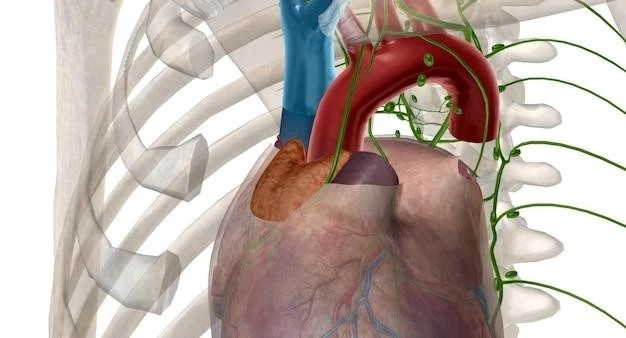Introduction
Takayasu arteritis is a rare type of vasculitis, which causes inflammation of the blood vessels, particularly damaging the large arteries, such as the aorta. Also known as aortic arch syndrome, it is an autoimmune inflammatory disease affecting the aorta and its branches.
Overview of Takayasu Arteritis
Takayasu arteritis, also known as aortic arch syndrome, is an autoimmune inflammatory disease affecting the aorta and its branches. It is a rare type of vasculitis that causes inflammation of the blood vessels, particularly damaging the large arteries such as the aorta. Takayasu arteritis is characterized by segmental and patchy granulomatous inflammation of the aorta and its branches. This condition predominantly affects women and can lead to complications due to the narrowing of blood vessels. While the exact cause of Takayasu arteritis is unknown, it involves productive inflammation in the walls of large arteries, ultimately leading to their blockage. Understanding the pathophysiology, diagnosis, and management of Takayasu arteritis is crucial for providing appropriate care to individuals affected by this chronic inflammatory condition.
Symptoms and Causes
Takayasu arteritis, also known as aortic arch syndrome, presents with symptoms such as fatigue, fever, weight loss, limb claudication, and pulse asymmetry. The exact cause of Takayasu arteritis remains unknown, but it is believed to involve an autoimmune response leading to inflammation and damage to the arterial walls.
Common Symptoms of Takayasu Arteritis
Common symptoms of Takayasu arteritis include fatigue, fever, weight loss, limb claudication, diminished or absent pulses in one or both arms, and pain in the chest, neck, or arm with exertion. Other signs may include high blood pressure, headache, dizziness, and visual disturbances. These symptoms result from the inflammation and narrowing of blood vessels, affecting the oxygen supply to various tissues and organs of the body.
Possible Causes of Takayasu Arteritis
The exact cause of Takayasu arteritis is not fully understood, but it is believed to be an autoimmune inflammatory disease that leads to the thickening, scarring, and narrowing of the arterial walls, particularly affecting the aorta and its branches. This condition may involve a complex interplay of genetic, environmental, and immunological factors triggering an abnormal immune response against the blood vessels. Research suggests that Takayasu arteritis is a systemic vasculitis characterized by granulomatous inflammation in the walls of large arteries, ultimately resulting in vascular damage and stenosis.

Diagnosis and Pathophysiology
Diagnosing Takayasu arteritis involves various methods such as imaging studies, blood tests, and physical examinations. Understanding the pathophysiology of this condition is crucial, as it involves autoimmune inflammatory processes leading to damage and narrowing of the large arteries, particularly the aorta and its branches.
Methods for Diagnosing Takayasu Arteritis
Diagnosing Takayasu arteritis typically involves a combination of imaging studies such as angiography, magnetic resonance imaging (MRI), and computed tomography (CT) angiography to assess arterial involvement and inflammation. Additionally, blood tests to evaluate inflammatory markers and antibodies, physical examinations to check for pulse abnormalities, and monitoring for symptoms such as hypertension or diminished pulses in limbs are crucial for accurate diagnosis. Collaborating with rheumatologists, cardiologists, and vascular specialists can aid in confirming the presence of Takayasu arteritis and initiating appropriate treatment strategies.
Understanding the Pathophysiology of Takayasu Arteritis
Takayasu arteritis is a form of vasculitis, causing inflammation that damages large arteries, especially the aorta. It is characterized by granulomatous inflammation in the arterial walls, leading to their narrowing and potential obliteration. This autoimmune disease affects the arterial system, impacting blood flow and potentially causing a range of symptoms related to compromised circulation. Understanding the pathophysiology of Takayasu arteritis is vital in managing and treating the condition effectively, focusing on reducing inflammation and maintaining vascular health.
Treatment and Management
Effective management of Takayasu arteritis involves a combination of medications to control inflammation and reduce arterial damage. Treatments may include corticosteroids, immunosuppressants, and biologic agents. Additionally, monitoring blood pressure, cholesterol levels, and implementing lifestyle changes such as a healthy diet and regular exercise are essential in managing Takayasu arteritis and preventing complications.
Available Treatment Options for Takayasu Arteritis
Treatments for Takayasu arteritis focus on managing inflammation and preventing complications. Some available treatment options include corticosteroids, immunosuppressants, biologic agents, and medications to regulate blood pressure and cholesterol levels. Lifestyle modifications like a healthy diet and regular exercise are also essential components of managing this chronic inflammatory condition.
Strategies for Managing Takayasu Arteritis
Effective management of Takayasu arteritis involves a holistic approach that includes medications to control inflammation, regular monitoring of blood pressure and cholesterol levels, and lifestyle modifications such as a healthy diet and regular exercise. Collaborating with a multidisciplinary healthcare team comprising rheumatologists, cardiologists, and vascular specialists can help tailor treatment strategies and optimize patient care.

Complications and Prognosis
Takayasu arteritis can lead to various complications such as hypertension, heart problems, stroke, and aortic aneurysm. The prognosis for individuals with Takayasu arteritis varies but with early diagnosis and appropriate management, many patients can effectively control the disease and lead fulfilling lives while minimizing the risk of complications.
Potential Complications Associated with Takayasu Arteritis
Complications of Takayasu arteritis can include hypertension, heart problems, stroke, and aortic aneurysm. Due to the impact on blood vessel health, individuals with Takayasu arteritis may also experience issues such as limb ischemia, organ damage from reduced blood flow, and an increased risk of cardiovascular events. Proper management and monitoring of the condition are essential to minimize these potential complications and improve overall prognosis.
Prognosis for Individuals with Takayasu Arteritis
The prognosis for individuals with Takayasu arteritis varies depending on factors such as disease severity, response to treatment, and presence of complications. With prompt diagnosis, appropriate management, and regular monitoring, many individuals can effectively control the disease, reduce inflammation, and maintain a good quality of life. Early intervention and a multidisciplinary approach involving healthcare specialists are essential for improving outcomes and ensuring long-term well-being.
